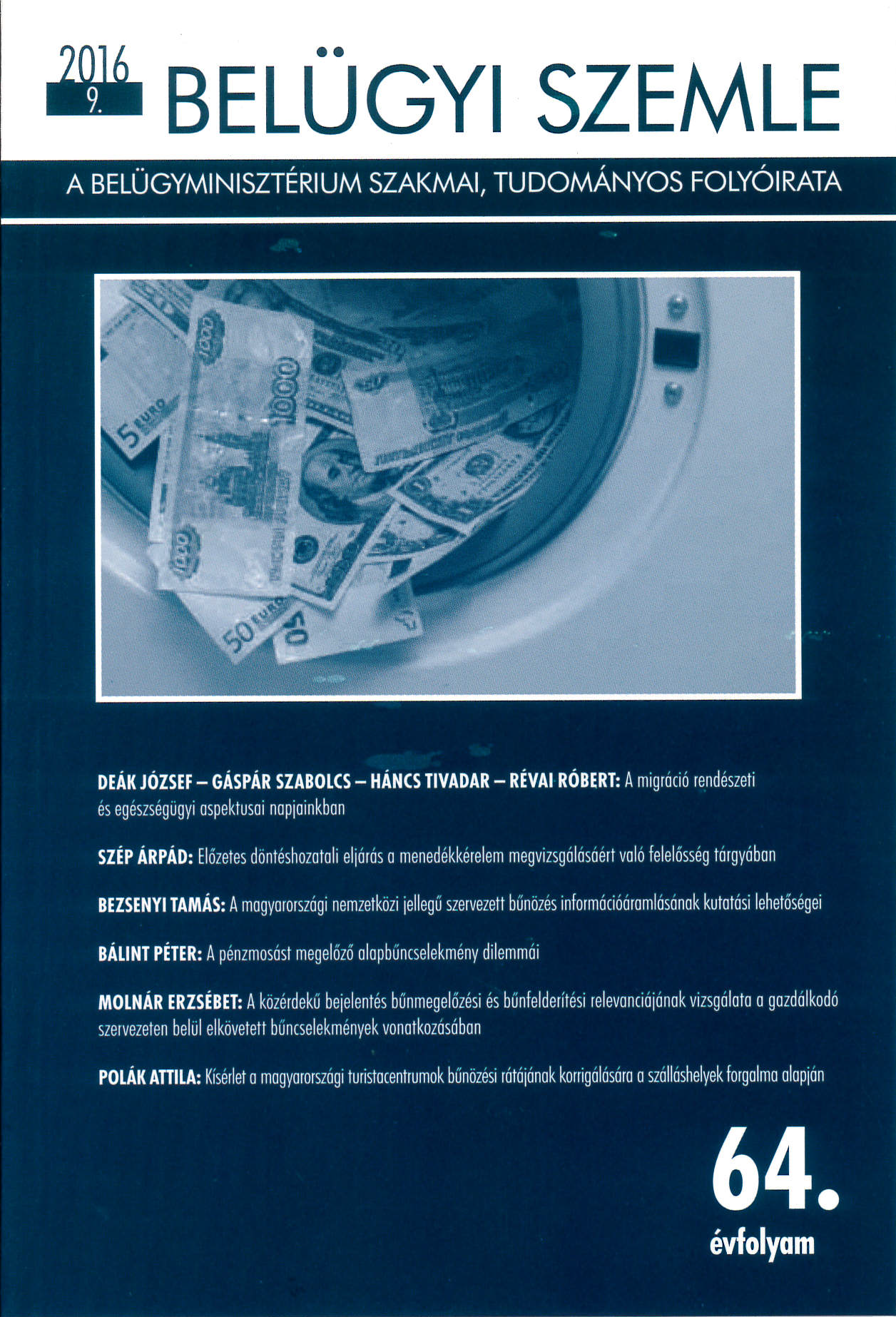Keywords
crime
evidence
Hungary
evidence
Hungary
How to Cite
The role of line-up and digital data in a specific indidency case. (2016). Academic Journal of Internal Affairs, 64(9), 119-129. https://doi.org/10.38146/BSZ.2016.9.7
Abstract
Through the presentation of a specific case, the author provides an overview of the role of presenting evidence, and line-up in criminal investigations in Hungary.
Downloads
Download data is not yet available.
Similar Articles
- István Herédi, Challenges of cybercrime investigations , Academic Journal of Internal Affairs: Vol. 70 No. 1 (2022)
- Tamás Vörös, Krisztina Takács, Attila Szabó, Attila Krizsán, Applications of annealing in forensic glass examinations , Academic Journal of Internal Affairs: Vol. 71 No. 1 (2023)
- Zsuzsanna Hornyik, Safety on peripheries, environment protection 2019-2020 , Academic Journal of Internal Affairs: Vol. 68 No. 1 (2020)
- Ágota Németh, Tamás Suszter, Gergely Takács, Zsombor Hermann, Sándor Dragon, Ákos Erdélyi, Barbara Mágó, International Law Enforcement Observer IX. , Academic Journal of Internal Affairs: Vol. 71 No. 3 (2023)
- József Beke, The system and forms of cooperation between the Hungarian and East German state security services in the Carlos case , Academic Journal of Internal Affairs: Vol. 71 No. 1.ksz. (2023): Special Issue
- Tibor Gaál, The increasing role of digital evidence in criminal procedure , Academic Journal of Internal Affairs: Vol. 66 No. 7-8 (2018)
- Noémi Emőke Baráth, Mónika Füstös, „What may a policeman ask?” , Academic Journal of Internal Affairs: Vol. 66 No. 4 (2018)
- Miklós Angyal, Zadig, Holmes and ensign Zoltán, or what can prove an investigator? , Academic Journal of Internal Affairs: Vol. 69 No. 10 (2021)
- Zoltán Kovács, Zoltán Mikó, Gábor Sági, Creation of security as a service in the electronic information systems of state and self-governments I. , Academic Journal of Internal Affairs: Vol. 66 No. 4 (2018)
- Ferenc Urbán, The global COVID-19 pandemic and the rules of Schengen border control , Academic Journal of Internal Affairs: Vol. 70 No. 3 (2022)
You may also start an advanced similarity search for this article.
Most read articles by the same author(s)
- Csaba Fenyvesi, The second version of the criminalist pyramid-model , Academic Journal of Internal Affairs: Vol. 62 No. 9 (2014)
- Csaba Fenyvesi, Justizmord and investigative errors , Academic Journal of Internal Affairs: Vol. 62 No. 3 (2014)
- Csaba Fenyvesi, Crime Prevention Function of Criminalistics , Academic Journal of Internal Affairs: Vol. 69 No. 10 (2021)
- Csaba Fenyvesi, Jack the Ripper and modern forensic methods , Academic Journal of Internal Affairs: Vol. 65 No. 7-8 (2017)
- Csaba Fenyvesi, Presentation for recognition and faith , Academic Journal of Internal Affairs: Vol. 66 No. 4 (2018)
- Csaba Fenyvesi, József Orbán, Electronic data as a cornerstone of the 7-5-1 forensic pyramid model , Academic Journal of Internal Affairs: Vol. 67 No. 2 (2019)
- Csaba Fenyvesi, Global trends in forensic science in the 21st century , Academic Journal of Internal Affairs: Vol. 61 No. 10 (2013)
- Csaba Fenyvesi, Every police organization is only as good as its data , Academic Journal of Internal Affairs: Vol. 70 No. 11 (2022)
- Csaba Fenyvesi, Concepts and academic approaches in criminal investigation in continental and common law , Academic Journal of Internal Affairs: Vol. 63 No. 2 (2015)
- Csaba Fenyvesi, Ferenc Kodba, Criminalistic Turns of the Murder Case in Pécs on Palahegyi Street in 1974 , Academic Journal of Internal Affairs: Vol. 68 No. 4 (2020)

